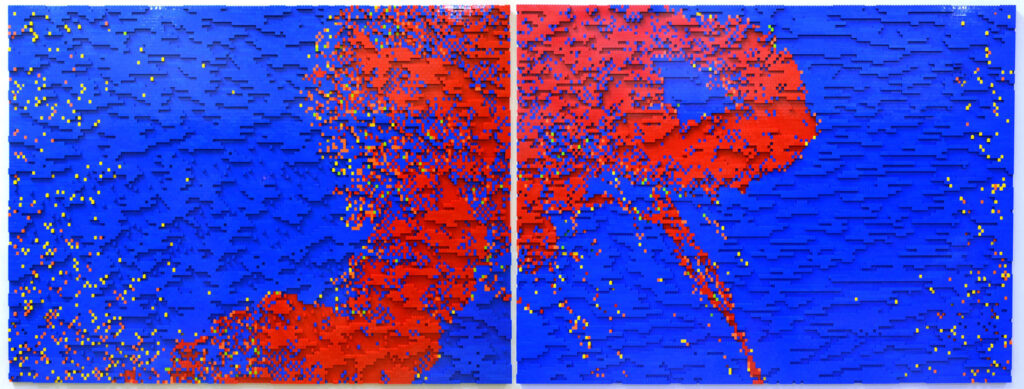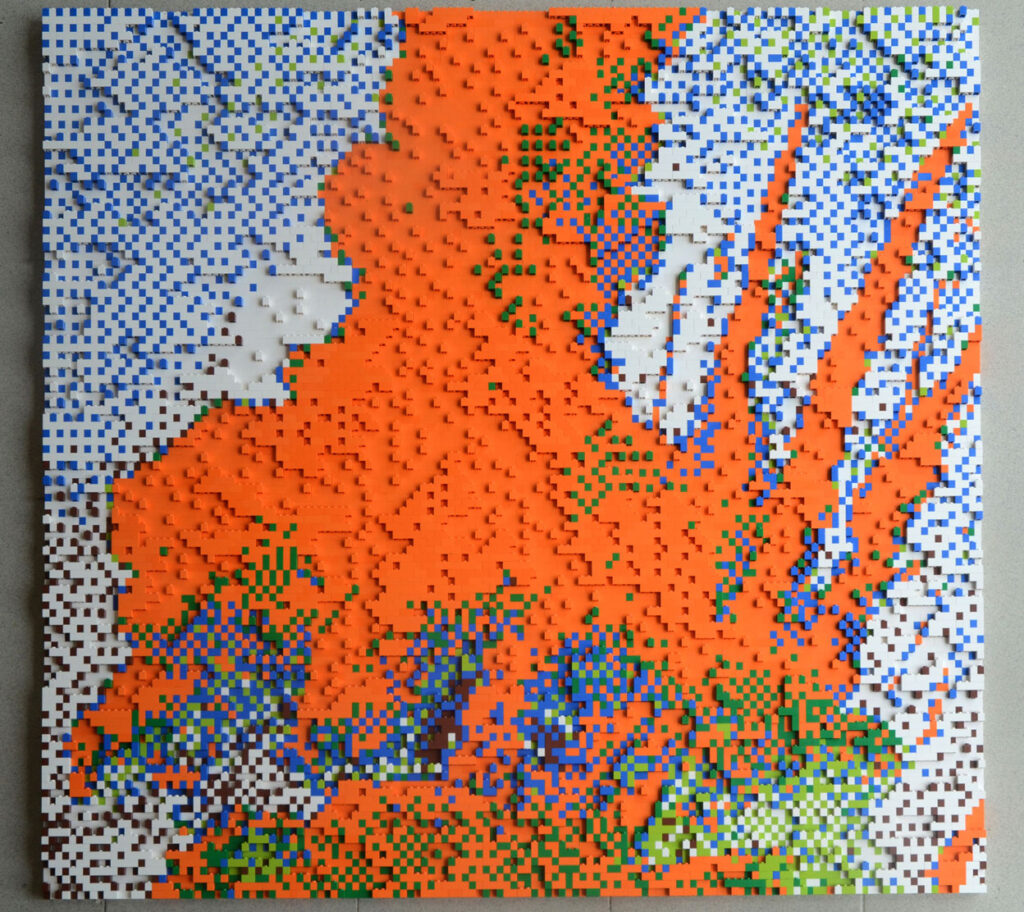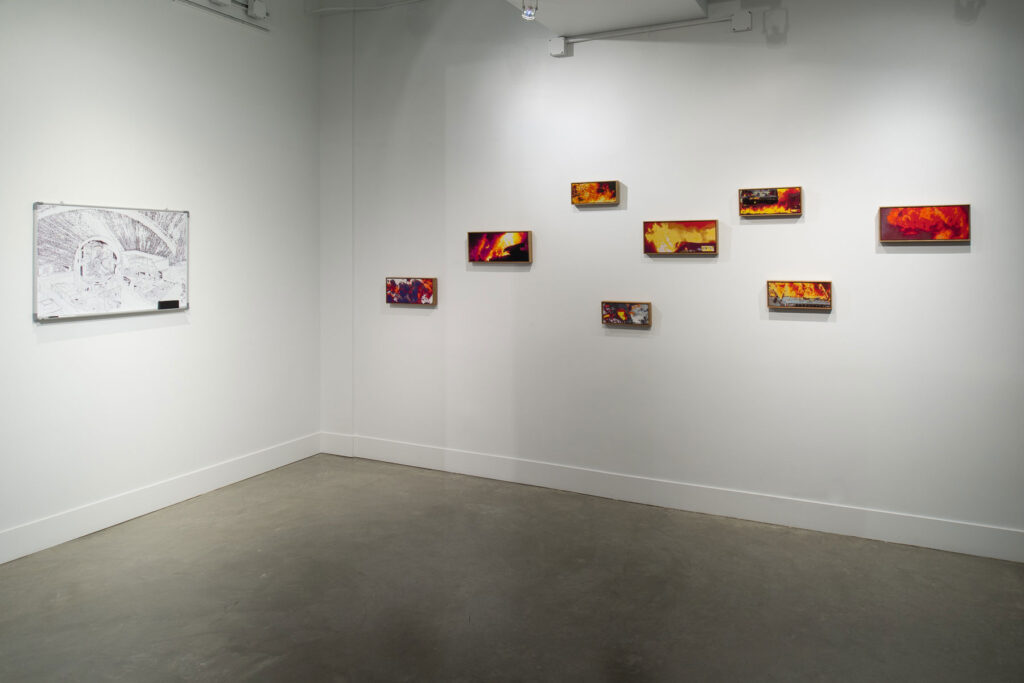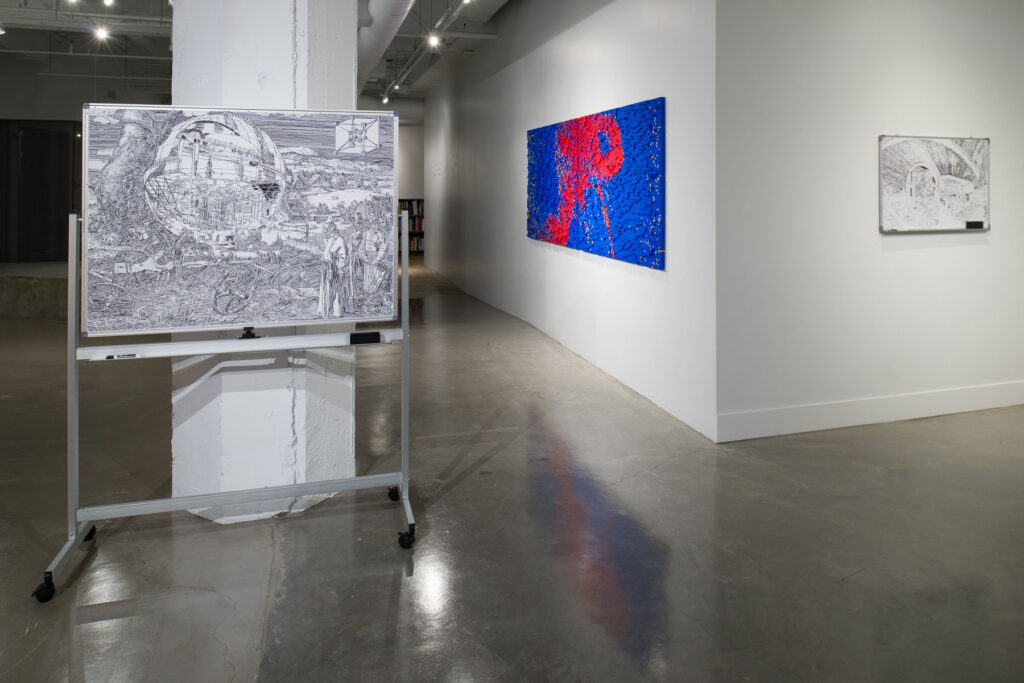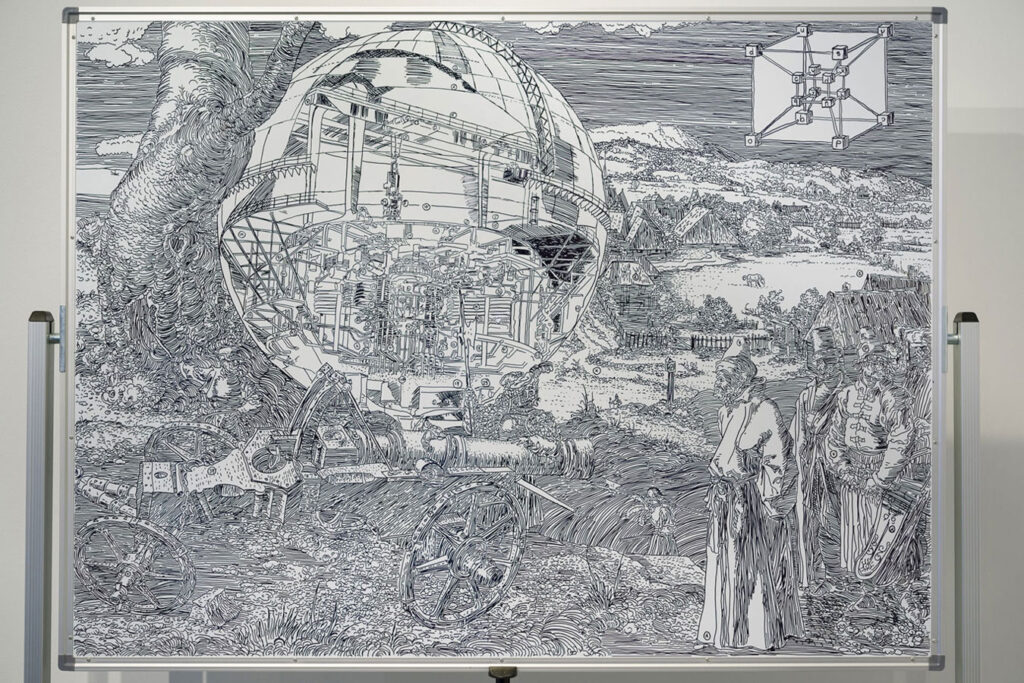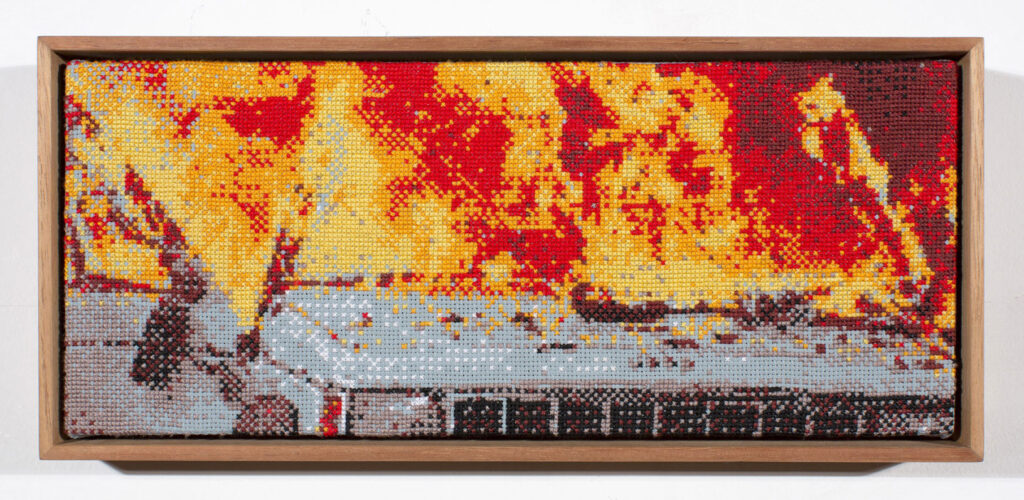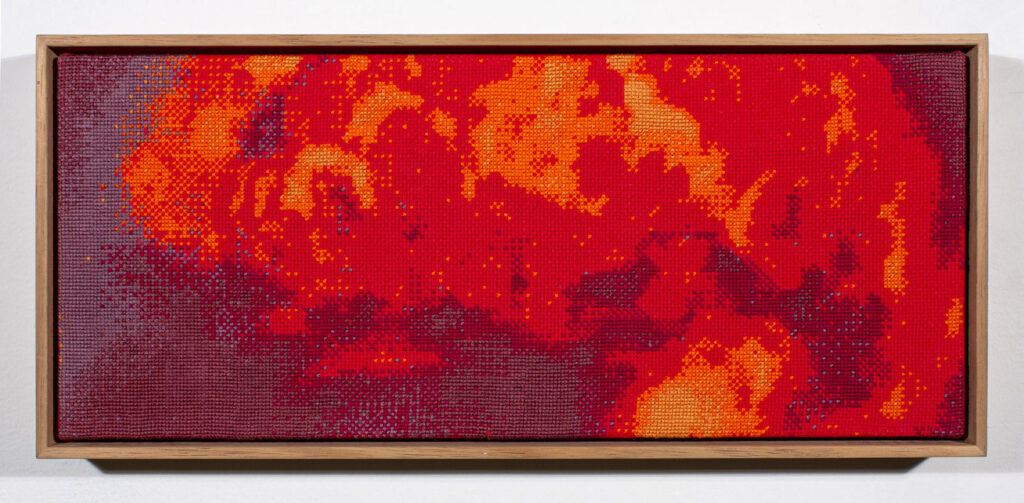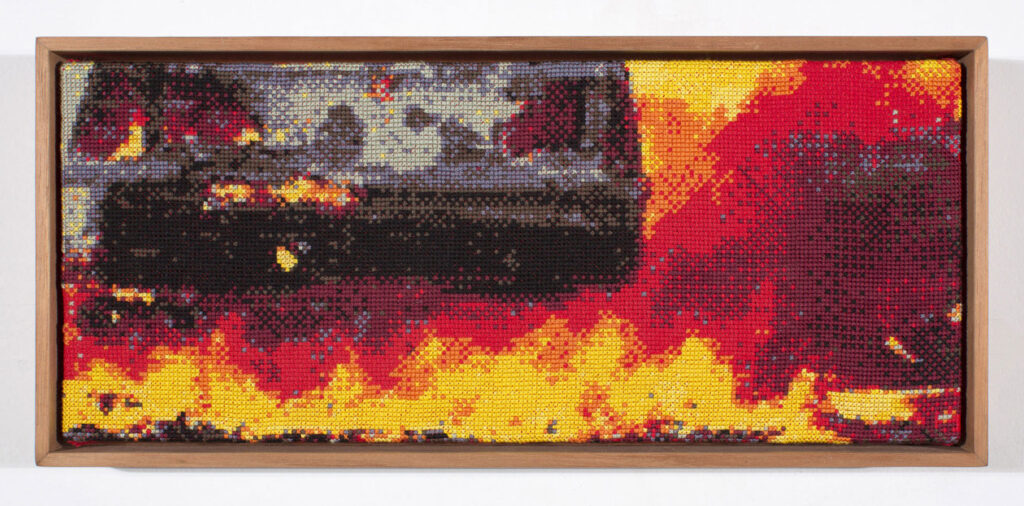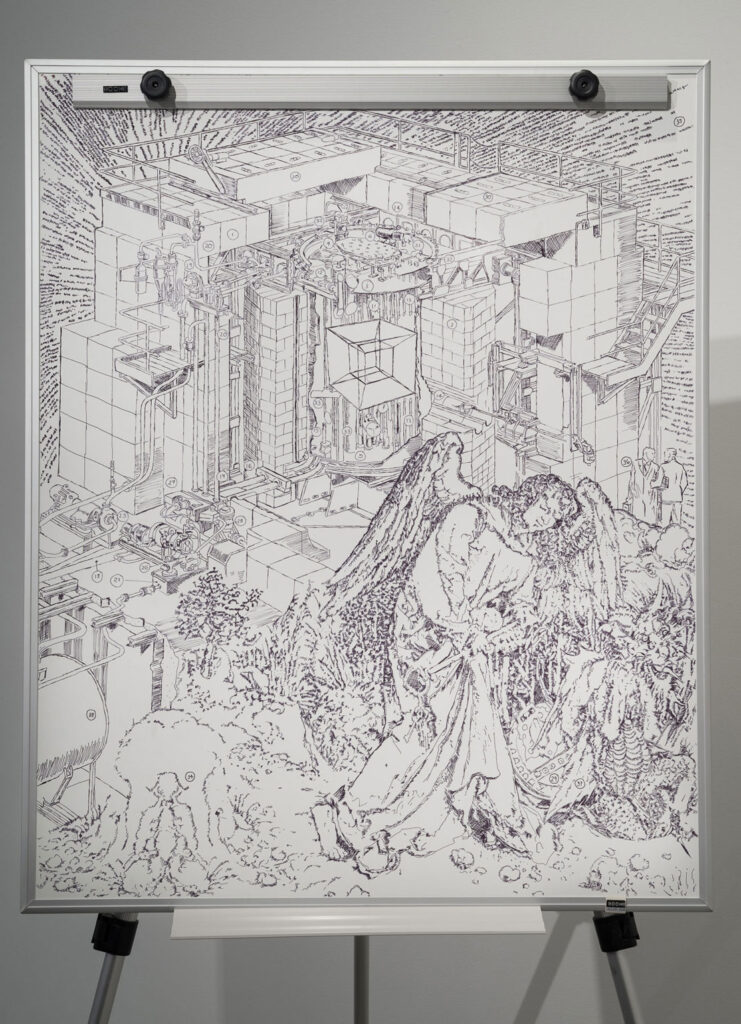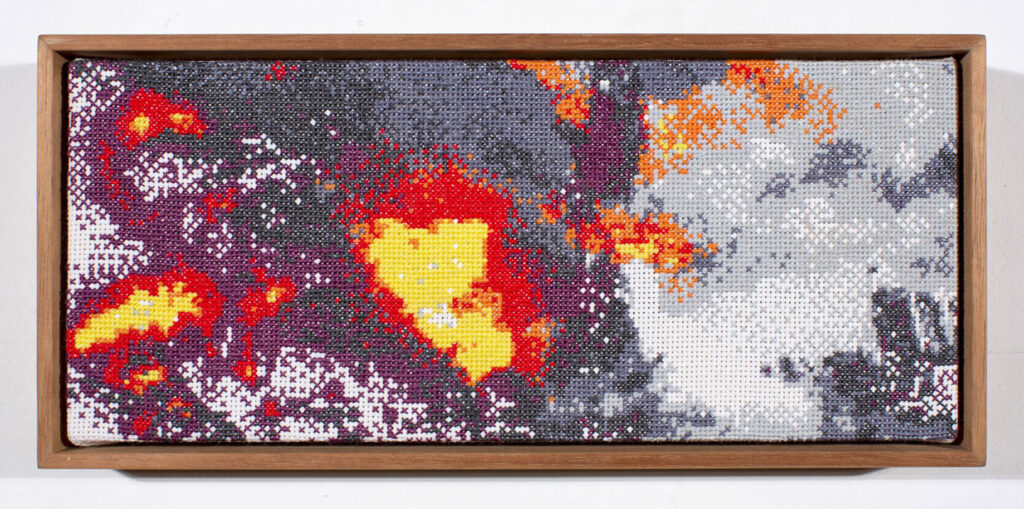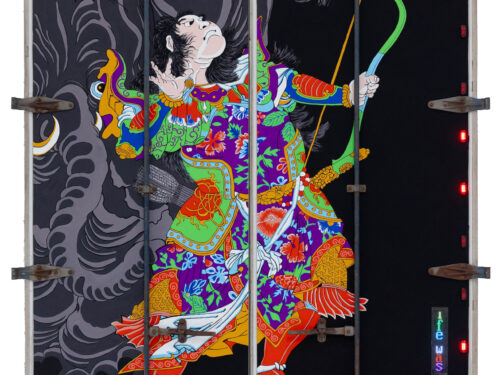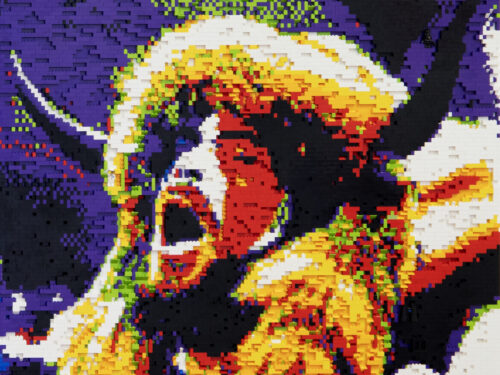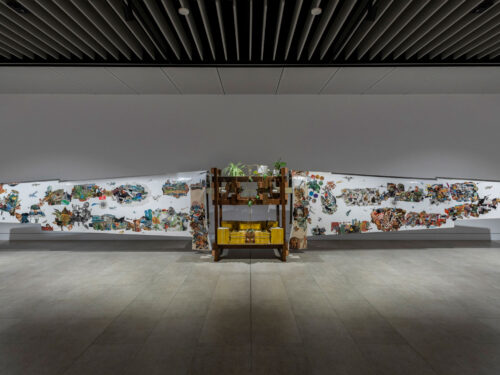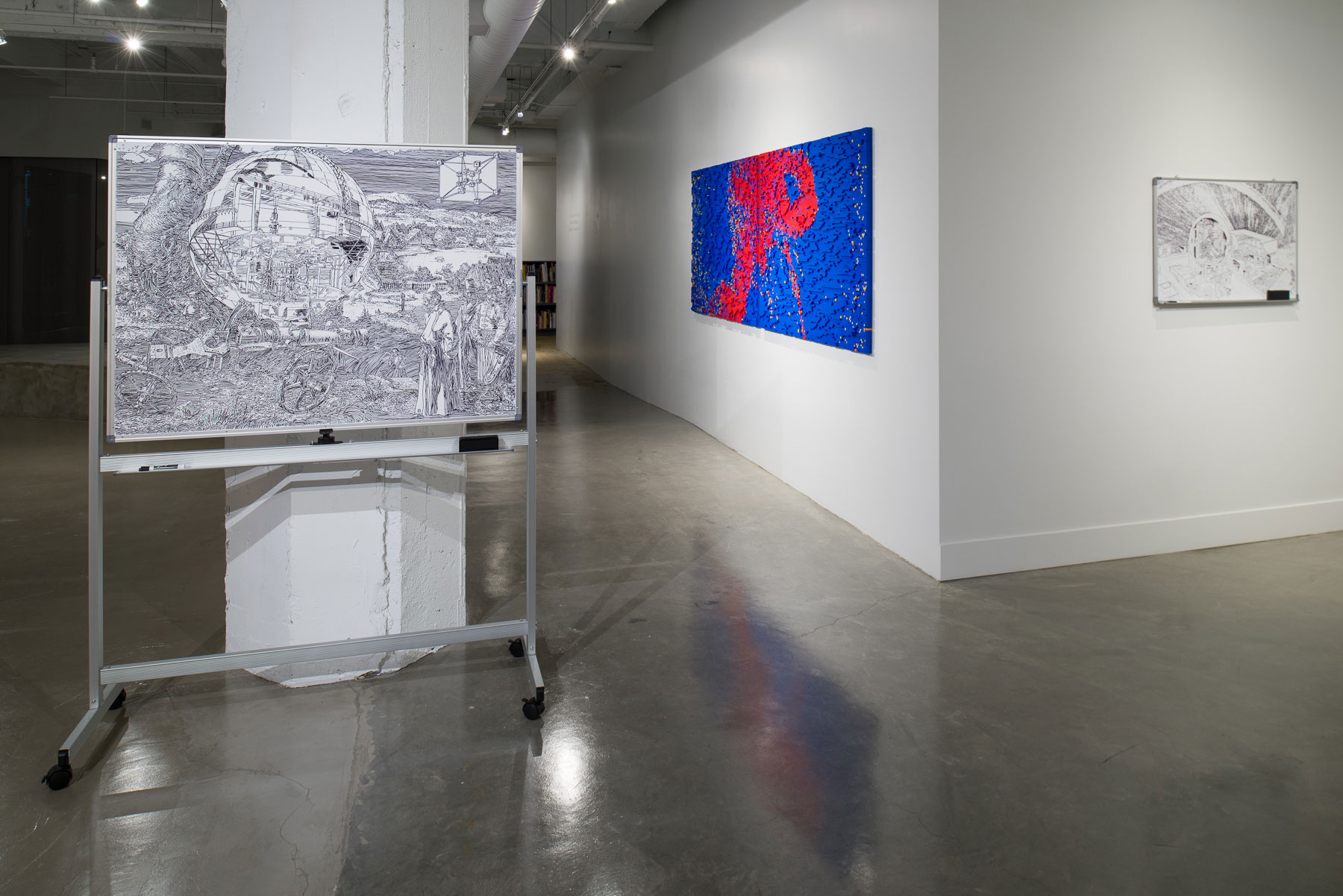
Architects of Destruction
No, this is not the name for a new album by a black metal band from Norway. It is the theme for the new exhibition by Claire Healy and Sean Cordeiro at Gallery Wendi Norris.
Since climbing down out of the trees all those moons ago, the underlying theme behind mankind’s narrative could be our constant oscillation between order and chaos. The world is not a kind place and humans have constantly been at battle with the forces of nature. But it seems that just as we feel that we have tamed the world, it doubles back and slaps us in our collective face.
The show presented at Gallery Wendi Norris will consist of a series of Lego works, cross-stitchings and whiteboard drawings depicting disasters or catastrophes. The various mediums that we have chosen to depict these calamities bring to light certain qualities of the disaster that we wish to focus on. To be specific: the Challenger Space Shuttle disaster is rendered in Lego- signalling the link between childhood dreams and beautiful annihilation; the fossil fuel disasters are executed in meticulous cross stitch- creating a bookend between the aeons it took to create gasoline products, the instantaneous time it takes to ignite it and the drawn-out time it takes to render the burning images in petit point; technological disasters will be drawn on whiteboards to illustrate the planning and preparation needed to totally fail.
The Lego Works:
We feel that the ‘Challenger’ disaster that occurred in 1986 was a significant historical event for our generation.
Children freely explore notions of life and death through play and through story telling (how many stories written by children end with ‘and then I died’?). It is in adult life that we grow more reticent about death and destruction. So when the space shuttle Challenger blew up in front of the children of the world’s eyes, it was perhaps the adult world that was more shocked than the kids.
Paul Virilio coined the term, the Integral Accident
“To invent the sailing ship or steamer is to invent the shipwreck.
To invent the train is to invent the rail accident of derailment.
To invent the family automobile is to produce the pile-up on the highway.
To get what is heavier than air to take off in the form of an aeroplane or dirigible is to invent the crash- the air disaster.
As for the space shuttle, Challenger, its blowing up in flight in the same year as the tragedy of Chernobyl occurred is the original accident of a new motor, the equivalent of the first shipwreck of the very first ship.”
The concept of the Integral Accident is not so revolutionary to a child who plays with Lego too much- in the hands of such a child, buildings and vehicles are endlessly created and destroyed. The Lego model is created in the certain knowledge that it will be destroyed in the not too distant future.
Many of our past works have been concerned with deconstruction: analysing the matter of an object through the deconstitution of its original shape and subsequent reconstitution into a different form. We are interested in Lego because it is an analogue of the modern house brick: stackable and able to be tessellated. The Lego brick, unlike its architectural counter-part has the element of changeability and movement integral within its design.
Thus, we are able to depict the manifestation of the space-age integral accident using Lego. Working with the temporal qualities of Lego we are able to build the unbuilt.
The Cross-stitching:
A time intensive process is used to represent a number of historically significant yet fleeting moments. This series of cross-stitchings focuses upon the aesthetics of fossil fuel consumption. The small details depicted within each piece are taken from iconic explosions that have been fuelled by oil.
We live in a created world of novelty and sensation. A world that constantly offers new experiences and visions. It is an age that will never again be repeated in history. It is an age that is literally fuelled by the remains of a bygone era: fossil fuel. We are the inheritors of a power that has taken millions of years to produce, a power that we have the pleasure of exhausting within several generations. But the power that drives our age is so ubiquitous, it almost becomes invisible, it is almost impossible to imagine a world without it.
The Whiteboard drawings:
‘The road to hell is paved with good intentions’, through forward planning and fantastic visions of a prosperous future, such foresight can overlook the possibility of catastrophe or the annihilation of the human race.
Looking at another concept of Paul Virillio’s, ‘Dromology’
‘Dromos’ is the Greek noun for road, but Virilio takes it to mean the activity of race (Virilio 1977:47). It is with this meaning in mind that he coins the term ‘dromology’, which he defined as the “science (or logic) of speed“. Dromology is important when considering the structuring of society in relation to warfare and modern media. He notes that the speed at which something happens may change its essential nature, and that which moves with speed quickly comes to dominate that which is slower. ‘Whoever controls the territory possesses it. Possession of territory is not primarily about laws and contracts, but first and foremost a matter of movement and circulation.’ [3]
We will be using the Tessaract: a 4 dimensional Hypercube, an object that exists only though the notion of time and space, to represent time. We will be combining this object with imagery from Albrect Durers prints, most notably ‘’The Four Horsemen of the Apocalypse.’
The marker renderings presented upon these whiteboards works allude to planning or presentation: pointing to the fact that disasters do not always come out from nowhere.
